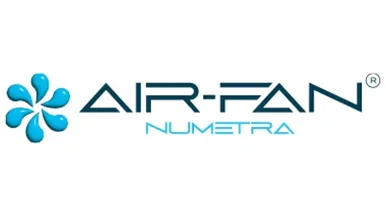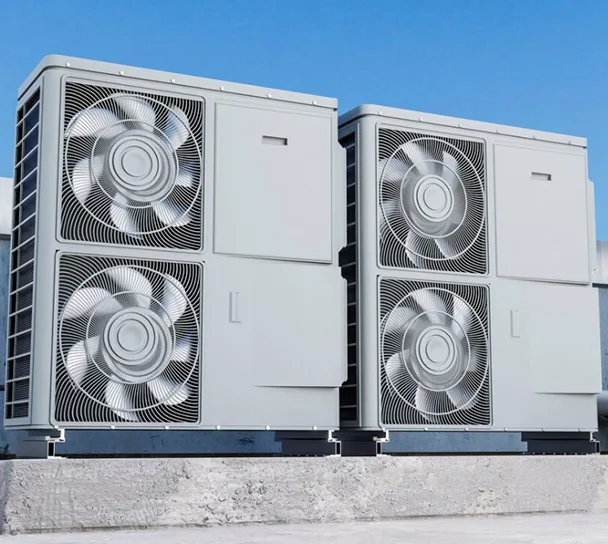Ventilation fan is a device used in industrial facilities to provide air flow. These fans help in purifying the air in indoor spaces, removing unwanted odors and smoke, and controlling humidity.
Ventilation fan can be designed in different sizes and models according to the needs of the business. Industrial type fans used in large enterprises assist in protecting worker health and increase work efficiency. These fans, commonly used in large areas like factories, workshops, and warehouses, can operate under high pressure.
Ventilation Fan Prices
Ventilation fan prices vary across different sectors and usage areas. These variations are generally determined by factors such as the size, capacity, motor power, and the material used in the fan. Additionally, the brand of the fan also plays a role in determining the prices.
Selecting the right fan for your workplace is a key factor in terms of pricing. Among the various ventilation system options, some are smaller with lower capacities, while others offer energy-saving features that provide long-term advantages.
For instance, a duct-type ventilation fan can be more costly compared to lower-capacity fans.
The features and advantages of duct-type fans are as follows:
- This type of fan is typically used for ventilating large areas.
- It provides low energy consumption and is frequently preferred in industrial settings due to its durable structure.
- These fans deliver high performance and long-term use, leading to energy savings.
Other fan types used in ventilation systems and their features are as follows:
Axial Fans
These fans are commonly used in factories, warehouses, and large spaces. Their main feature is their quiet operation. The most significant advantage is their suitability for use in dusty environments. This type of fan provides high pressure and a strong air flow.
Centrifugal Fans
These are suitable for use in dust collection systems and industrial areas. They are also known for being durable and long-lasting.
Portable Fans
These fans are usually used in construction sites and temporary work areas. They are easily portable and feature quick installation. The mobility of this type of fan is quite high.

What are the Advantages of Ventilation Fans?
The advantages of ventilation fans vary depending on certain criteria. One of the most important features is their energy efficiency, allowing them to offer high performance.
These fans are also noted for their durability. Fans used in industrial areas are often made of stainless steel, which contributes to their long-term use.
Additionally, these fans are preferred for their easy installation. Ventilation fans, with their various types, are designed to meet the expectations of the area in which they are used. For these reasons, they are frequently chosen in industrial settings.
With all these features and advantages, there are many factors that determine ventilation fan prices. These devices show a wide range of variability. Choosing the right device not only increases operational efficiency but also helps reduce long-term costs.
Considering all these advantages, selecting the right ventilation system is a crucial factor in creating a healthy and efficient working environment.
The features of industrial type ventilation fans are as follows:

Silent Ventilation Fan
Silent industrial ventilation fans are systems that operate quieter compared to traditional models. Especially preferred in environments sensitive to noise, these models promise a peaceful atmosphere while providing effective air flow.
Silent fans operate at low decibel levels. They are particularly preferred in places where silence is important, like hospitals and libraries. Thanks to noise-reducing insulation systems and special motor designs, they do not cause noise even though they operate at high capacity.
The most popular industrial fan varieties can be listed as follows:
- Axial fans, which direct air flow parallel to the fan’s axis of rotation
- Centrifugal fans, which move air flow in a radial direction using a rotating disk
- Blower fans used in ventilation, cooling, and exhaust systems

- Vaneaxial fans, capable of creating high-pressure air movement
- Emergency fans that remove smoke and gas during a fire
- Roof fans that provide ventilation, cooling, and humidity control

What is the Purpose of a Ventilation Fan?
Ventilations used in industrial processes are of vital importance. Especially in the chemical sector, air circulation in the production environment is critical in ensuring occupational health and safety. Moreover, other air pollutants (dust, smoke, toxic gas, small particles) that could threaten workers’ health are cleaned through ventilation fans.
Industrial fans improve air quality by increasing air circulation in enclosed spaces. Additionally, they prevent mold and dampness by controlling humidity. Fans assist in cooling the environment by expelling excessive heat.
In industrial environments, ventilation fans that remove harmful gases and vapors protect the health and safety of workers and contribute to energy saving. Particularly in large-scale industrial facilities, where many people work in crowded environments, investing in ventilation systems is very important.
